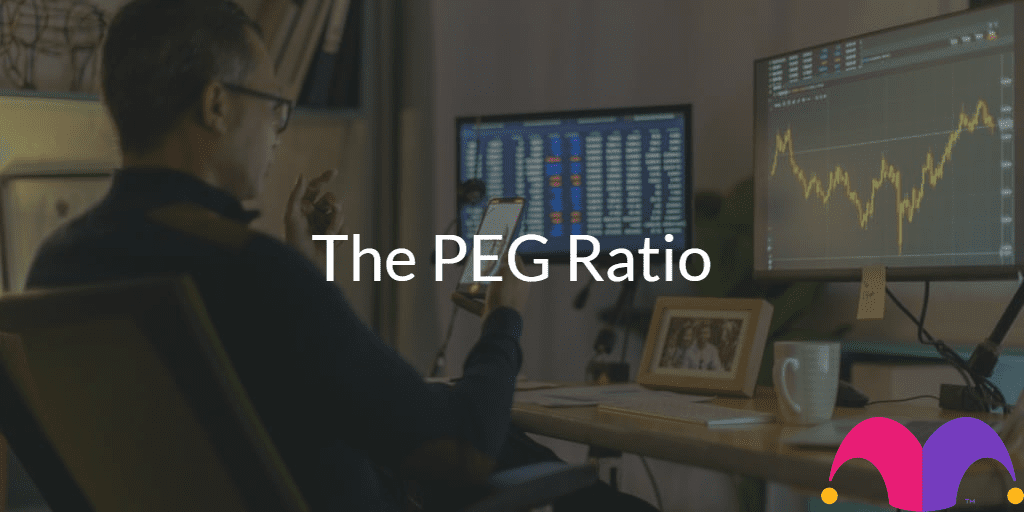The PEG ratio is a very handy number for spotting growth share bargains. We explain what it is and how to use it.
It’s closely related to the Price to Earnings ratio (P/E) which, on its own, is sometimes really not a very meaningful number. A low P/E represents a low share price compared to a company’s earnings, but it is an over-simplification to say that a company with a lower P/E is a better investment, because it all depends on the earnings we expect from a company in the future.
A company that is expected to grow its earnings rapidly in coming years will today be able to command a higher share price, and so a higher P/E, than one with poorer future growth. In order to decide which of two companies is the better bet, we need some way to relate a company’s P/E to its expected earnings.
Enter the PEG
The P/E to Growth ratio, or the PEG, was popularised by both Peter Lynch, author of the classic One Up on Wall Street, and by Jim Slater in his excellent Zulu Principle books.
The PEG is calculated by dividing a company’s P/E ratio by its expected EPS (earnings per share) growth rate for the coming year. So if, at the end of one year, a company reports earnings per share of 10p and its shares are changing hands for £1 each, then it will have be on a P/E ratio of 10 (The £1 share price divided by the 10p earnings). If we then examine the consensus of analysts’ forecasts for the next year and see they’re expecting 12p per share, we can see that that is an EPS growth of 20% (from 10p to 12p).
To calculate the PEG, we then take the P/E and divide it by that growth rate, giving 10/20, or 0.5. Similarly a company on a P/E of 5 and a forecast growth rate of 10% will also be on a PEG of 0.5, and we have found a way to compare the two, even though they have radically different P/E figures.
Good PEG, bad PEG
So what is a good value for a PEG ratio? As the growth rate is already factored into the PEG, we can compare the PEG of different companies directly. Peter Lynch suggests that a PEG of one represents fair value, so if a company’s expected growth is 10% a year then a P/E of 10 will suggest it is neither over-priced nor under-priced.
A PEG of less than one suggests a company’s shares may be a bargain (as the P/E is low in relation to its expected growth). Jim Slater, in his Zulu Prinicple, uses a PEG of 0.7 as a cut-off point. Anything lower than that for a growing company suggests it is worth further investigation.
Caution
Useful though the PEG might be, it must be fairly clear that it is not a magic ratio that will always find shares we should buy. If it was, everyone would be using it, buying low-PEG shares, pushing the prices up, and in turn raising the P/E and the PEG, thus eliminating all low-PEG companies. There are several cautions that need to be observed when using the PEG ratio.
It is generally only thought to work with “growth companies” — that is, companies that are growing their earnings faster than average for their industry. If a company has reached maturity and is paying out healthy dividends instead of re-investing its earnings for future growth, the PEG is likely to be of little or no use.
A few years of past earnings growth is often thought to be an important criterion for finding genuine growth companies — a company that has missed a year or two of growth recently might be more likely to miss again next year or the year after.
Earnings forecasts are often wildly wrong, and this is especially risky if a company only has a small number of analysts following it and making forecasts.
It is hard to calculate a company’s PEG part-way through a year, and it is ideally calculated at a year-end. This makes it difficult to compare companies with different year-ends, and if a company is part way through its year we need to take into account some of the following year’s growth too. This is why some analysts calculate a rolling PEG, based on estimates of the 12 months from the present rather than a specific financial year.
A first pass
But if you bear in mind those cautions, the PEG ratio can provide a useful filter with which to narrow down the vast array of companies out there. While it won’t shout “buy this” on its own, it can at least point to some possible gems for further investigation.
[Static_FreeReport]
